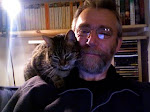Saturday, November 30, 2024
Satiety (02) TD.130051
Tuesday, November 19, 2024
Satiety (01) Shulman's gift of threonine 1160
I have to acknowledge an important gift from Dr Shulman's lab in this paper:
At time point 10.35 he observes that this crucial insulin resistance pathway is activated under starvation, to spare glucose for the brain, hence its conservation.
Sunday, November 10, 2024
Rapeseed oil for weight loss (4): Hypocaloric satiety
A highly saturated fat-rich diet is more obesogenic than diets with lower saturated fat content
and is looking at this graph:
Monday, November 04, 2024
Rapeseed oil for weight loss (3) Canola oil vs butter round two
The oddity is the blip downwards of weight in canola fed rats, highlighted by the red oval on the graph:
Sunday, November 03, 2024
Rapeseed oil for weight loss (2) and butter for obesity round one
This is the next paper. These people are good. Really good. There is almost nothing amateurish in this paper:
A highly saturated fat-rich diet is more obesogenic than diets with lower saturated fat content"The present study tested canola, lard, and butter, respectively, low, moderate, and rich sources of SFA, widely consumed in the human diet, in an animal model of dietary obesity. As predicted, results confirmed the hypothesis that an SFA-rich diet is more obesogenic than diets with lower SFA content."
Saturday, November 02, 2024
Have you thought about electron transporting flavoprotein dehydrogenase and its substrate electron transporting flavoprotein?
The basic TLDR is that if you take fat adapted mitochondria they will be using mtETFdh to generate a significant proportion of their maximal oxygen consumption for ATP generation. This means that complexes I and II will be down regulated, so supplying electrons to these complexes cannot match the oxygen consumption which would be generated if mtETFdh was maximally active. We have no available direct supplies of electron transporting flavoprotein to supply FADH2 in the way that beta oxidation does. "Dysfunction" is actually an artefact of not inputting adequate electrons to the CoQ couple via mtETFdh.
This applied both to studies on high fat diets and studies on fasting. It implies extreme caution if one is to decide that high PUFA diets, when high in overall fat, do actually cause *any* mitochondrial dysfunction, if only tested using inputs from glutamate/malate or succinate.
So this has major implications as a generic "how to read a paper" factor.
The insight is based on the oxygen consumptions in this paper where "disrupted bioenergetics" are claimed.
Rapeseed oil‑rich diet alters hepatic mitochondrial membrane lipid composition and disrupts bioenergetics
I wrote this in the post about the above paper:
There is nothing wrong with these mitochondria. Bioenergetic are *not* disrupted, as suggested by the title of the paper. Let's dig deeper.
What is happening is that the study is taking mitochondria from fat-adapted rats and feeding them on either a complex I input or a complex II input. Fatty acids, even LA, make significant use of electron transporting flavoprotein (ETF) dehydrogenase as their input to the CoQ couple. Mitochondria adapt their electron transport chains to the substrates available. If mitochondria from rats fed 40% of calories from fat are significantly dependent on mtETFdh for input to the CoQ couple, and have down regulated both complexes I and II, then feeding the preparation on substrates specifically aimed at complex I or II will obviously produce sub-maximal oxygen consumption. Which is what happens under either state 3 respiration or FCCP uncoupling.
Under the "tickover" conditions of state 4 respiration the uncoupling from PUFA shows clearly.
Obviously, to restore visibly normal mitochondrial function, what's needed is a supply of reduced ETF to use as a substrate for mtETFdh. As supplied by beta oxidation. Sadly you can't just buy reduced electron transporting flavoprotein from Sigma Aldridge, so you end up with artifactual mitochondrial "dysfunction".








